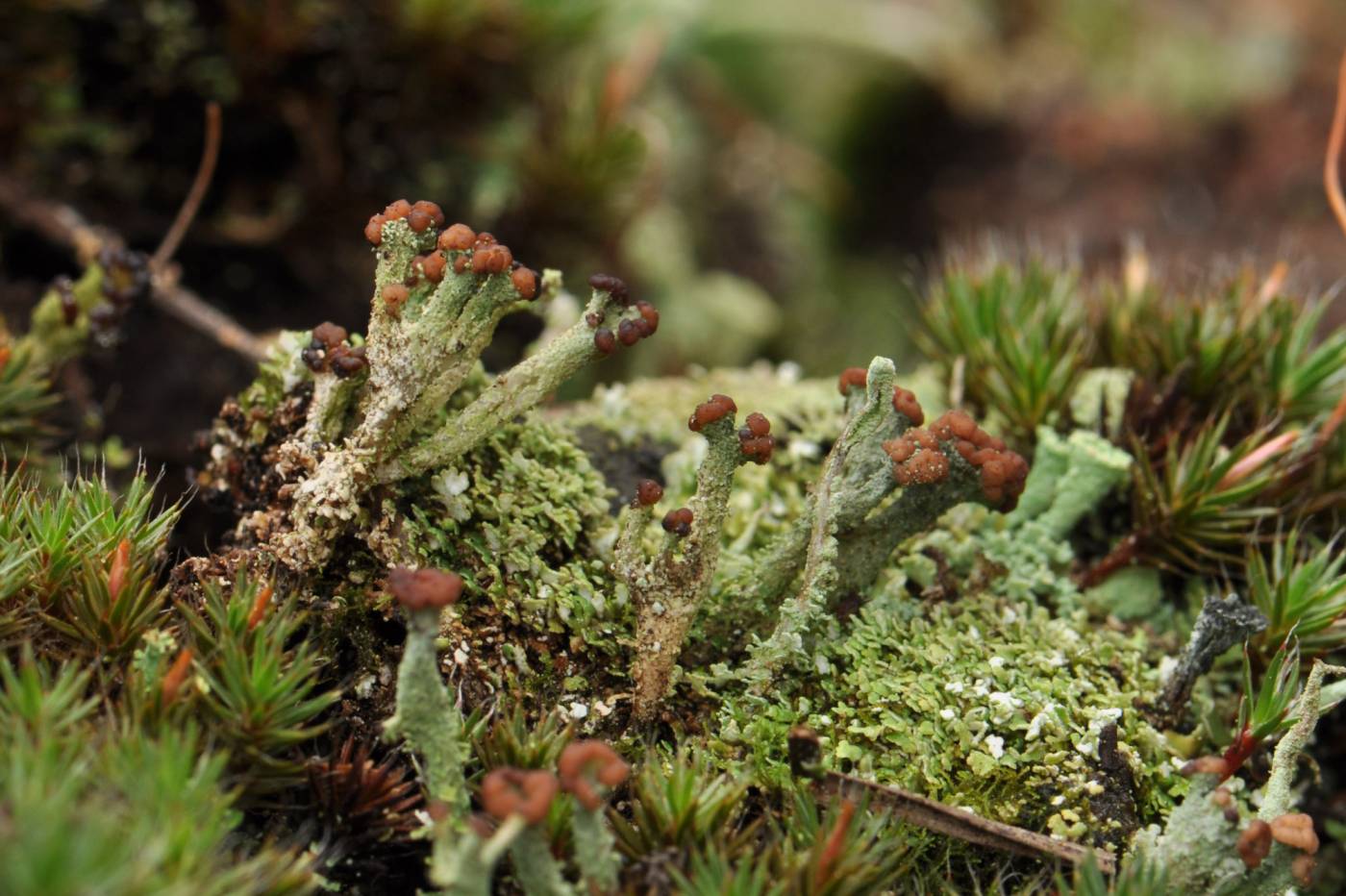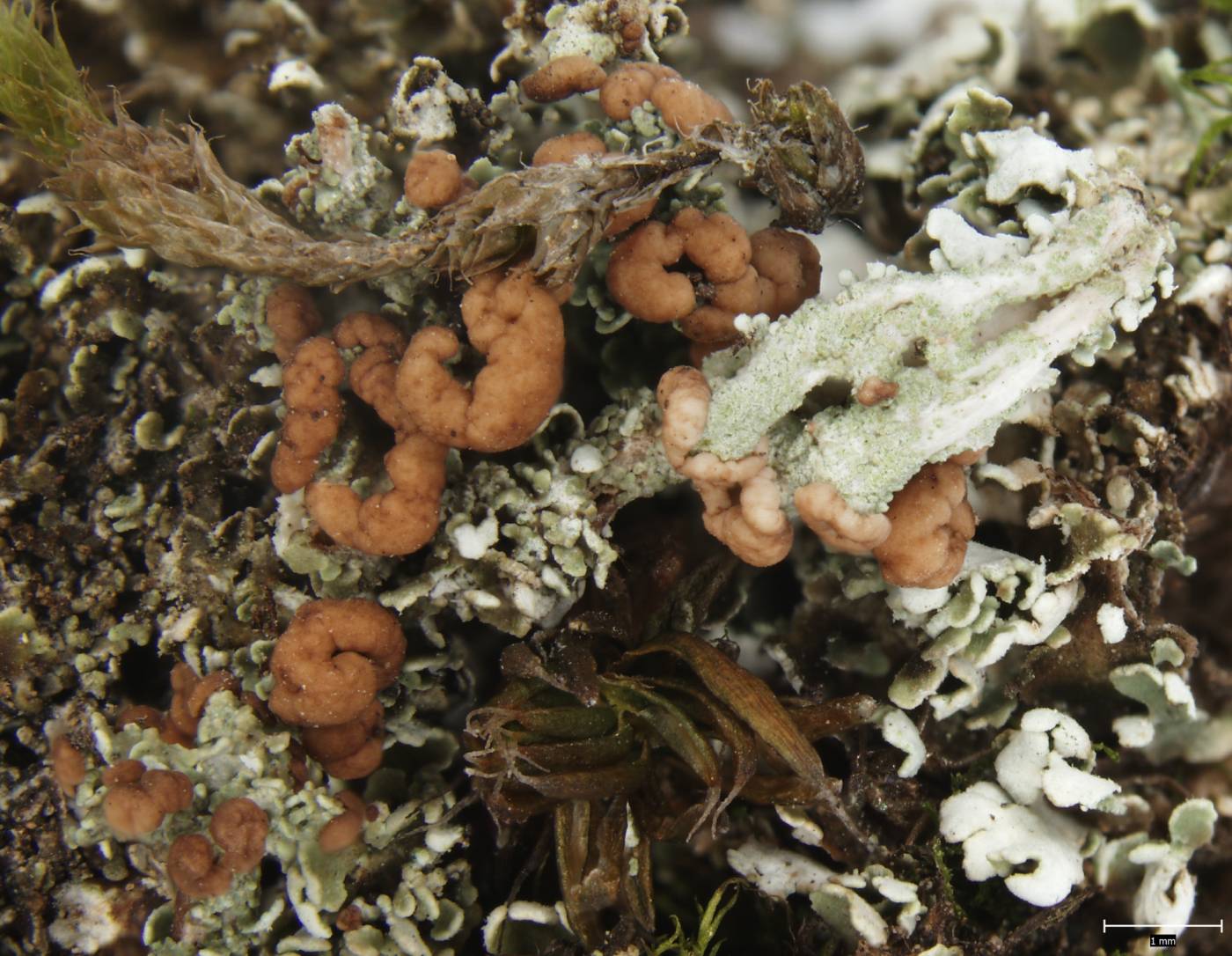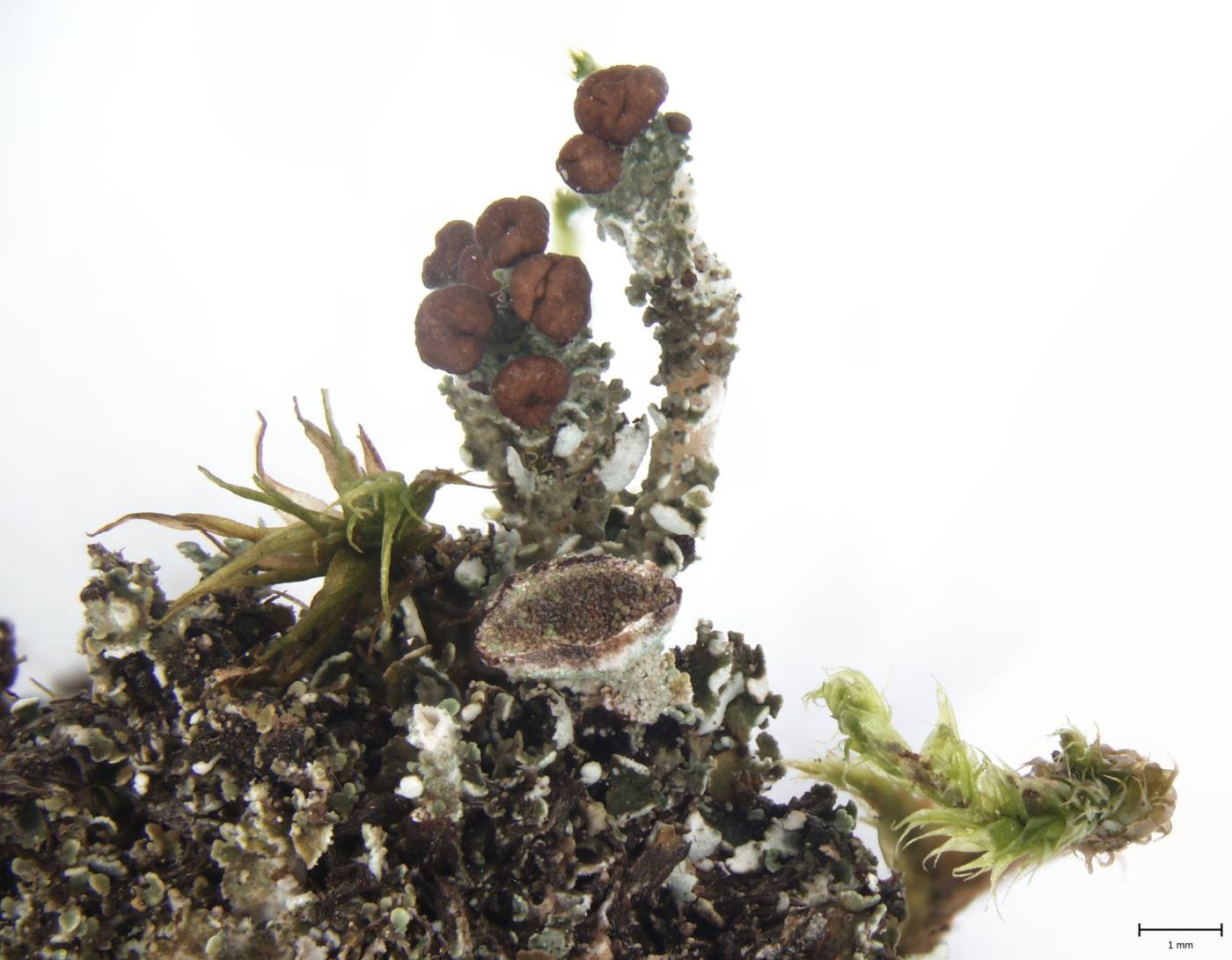A very variable brown-fruited Cladonia usually with persistent primary thallus composed of minute, only a few millimetres in size, fragile squamules, which have a conspicuously light green colour when wet. Podetia are low, up to 2 cm, and very variable, even within a single population. This fact probably gave the species its older name C. anomaea. Most commonly, irregular dentate scyphi are formed. However, the podetia might also be ascyphose and slightly branched. Their surface is usually partly decorticated, but sometimes corticate, covered with squamules or granules. Apothecia are common. Some forms may resemble C. phyllophora, which usually has more robust podetia, its primary thallus is ephemeral and is reliably recognized by its blackening podetial bases.
The species is often reported from decaying wood and humus in the literature, but most of the Czech records come from various acidic (often sandy) soil types. There are also records from mossy rocks. It typically grows on rock outcrops, in open pine forests, on sandbanks and heathlands. Its occurrence in the Czech Republic follows its European suboceanic distribution area; in Bohemia, it is scattered on natural stands mainly at lower and middle elevations but is very rare in Moravia.
taxonomic classification:Ascomycota → Lecanoromycetes → Lecanorales → Cladoniaceae → Cladonia
most frequented synonyms:Cladonia anomaea, Cladonia pityreaRed List (Liška & Palice 2010):NT – near threatened
Occurrence in the Czech Republic
All records: 108, confirmed 92. One click on a selected square displays particular record(s), including their source(s).



